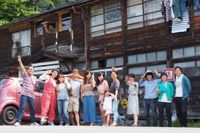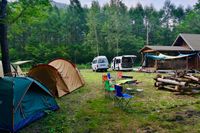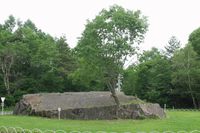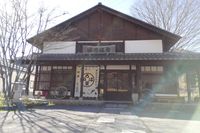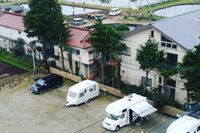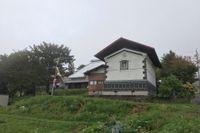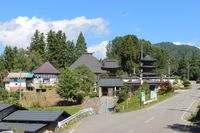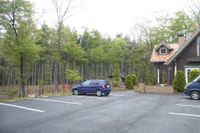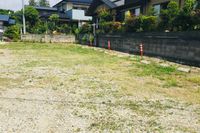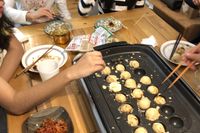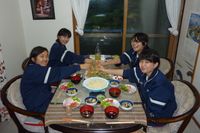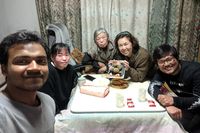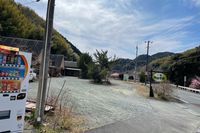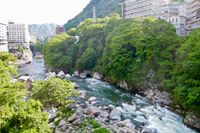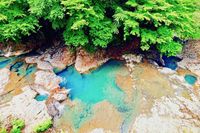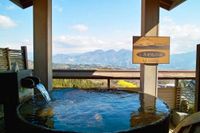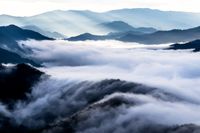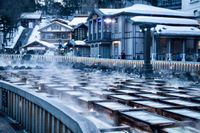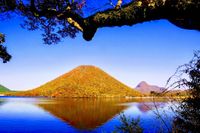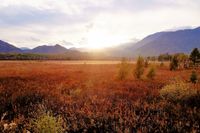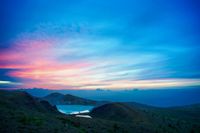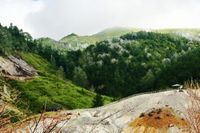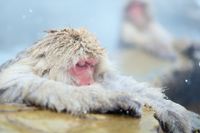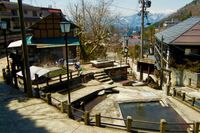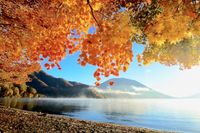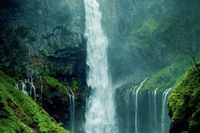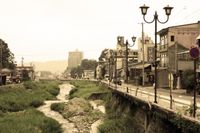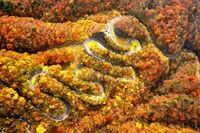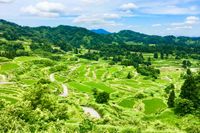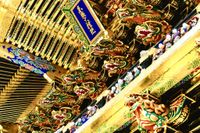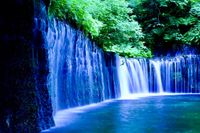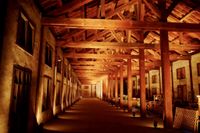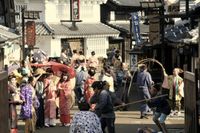Doai Station
群馬県/利根郡みなかみ町

Description
This is an underground station in Gunma, on the JR Joetsu line. The station is 81 meters below ground, and passengers have to climb a passage of around 338 meters or 462 steps, followed by a further 143 meter passage, and finally 24 further steps, leading it to becoming known as one of Japan's "most deep underground stations".
Homepage
Address
Nearby Car Night Spots
A luxurious Niigami Pass camping car spot where you can occupy a 500 tsubo lot by yourself
¥150,000〜
/ per night群馬県 吾妻郡長野原町北軽井沢
5.0
(2)Nearby Activities
【Only Foreign Visitors】Takoyaki Party with Locals
¥5,000〜
/ per personNagano Prefecture Wakaho Kawada, Nagano City
3.0
(0)【Only Foreign Visitors】Local Meetup in Nagano City
¥5,000〜
/ per personNagano Prefecture Hirabayashi, Nagano City
3.0
(0)【Only Foreign Visitors】Original Miso Ramen Party
¥5,000〜
/ per personNagano Prefecture Minowa, Nagano City
3.0
(0)【Only Foreign Visitors】International Exchange with Takoyaki and Okonomiyaki
¥5,000〜
/ per personNagano Prefecture Wakasato, Nagano City
3.0
(0)【Only Foriegn Visitors】 International exchange with handmade udon!
¥5,000〜
/ per personNagano Prefecture Shinonoi Utabi, Nagano City
3.0
(0)【Only foreigners】 Experience local life in Nagano
¥5,000〜
/ per personNagano Takehusa, Shinshu-shinmachi, Nagano city,
3.0
(0)Ranking Stations
(Bonfire BBQ) Chita Mihama Noma Beach Station
¥3,500〜
/ per nightAichi Noma, Mihamacho, Chita County
4.7
(42)Vanlife BASE | 45 min. from Narita Airport / Perfect for campervan travel/A seaside town rich in nature/Japanese countryside town/welcome traveler
¥7,000〜
/ per nightChiba Koseki, Kujukuri-machi, Sambu-gun
5.0
(61)Shin Meishin Suzuka PA (inbound) RV Station Suzuka * With Power!
¥2,200〜
/ per nightMie Yamamotocho, Suzuka-shi
4.3
(156)Nearby Drive Spots
Minakami Onsen
This is an Onsen in Minakami town. It is situated at the upper part of Tone River, where it is surrounded by the Suwa Gorge and autumnal leaves. The area is popular for the horse drawn carts that run around this area. The area is also known for being a great spot for ski, rafting and other outdoor sports.
Shima no Oketsu
Here, one can see the 8 large potholes within Shimagawa River. These potholes are formed where rocks and sand particles flow in circles in the same areas and gradually erode at the river bed. Over tens of thousands of years, it forms a natural wonder that can be viewed today.
Ikaho Onsen
This is an old Onsen bath in Ikaho Town. It boasts 1,300 years of history and appeared in Manyoshu, a book collection of traditional Japanese poetry. The Onsen was used as a place of healing for a wounded soldier named Takeda Katsuyori, and eventually he commanded the area to be turned into an Onsen town. The area was also loved by many literary greats such as Natsume Soseki, Hagiwara Sakutaro and Noguchi Ujo. It is also famous as a place for hot spring buns and dumplings.※Credit:旅と温泉の無料写真素材 おんふぉと http://on-photo.com/
Shiori Pass
This is a mountain pass in Minamiuonuma City, at an altitude of 1,065 meters. The area is famous for the clouds that flow and pass over and down the mountain ridge line, known as the "cloud waterfall". The mystery of this wilderness can be seen early in the morning from summer to autumn. ※滝雲(枝折峠) ©Koichi-Hayakawa クリエイティブコモンズライセンス(表示4.0 国際)https://creativecommons.org/licenses/by/4.0/
Kusatsu Onsen
This is a famous onsen located at the foot of Kusatsu Shirane Volcano. It was named as one of the top Onsens in the country during the Edo period(1603-1868). The onsen is special for its large amount of natural water and is often used for research on "Yumomi", which is a process of inserting a hexagonal plate to reduce the feeling of heat when initially entering a warm bath.
Mount Shina
This is a mountain in Gunma prefecture which has been worshipped throughout the ages. With a height of 1,449m, the mountain also has the nickname of "Haruna Fuji". The area is particularly well known for the contrasting blue of the Lake Shina with the reds and oranges of the autumn leaves.
Senjyo Gahara
This is a 400 hectare high marshfield area within Nikko National Park. The name comes from the fact that two mountain Gods, Futaaranokami (from Mount Nantai) and Akaginokami (From Mount Akagi) battled a large snake and large centipede respectively. As there is nature abound, the area is also particularly suitable for hiking.
Yugama Crater Lake
This is a crater lake in Kusatsu Mount Shirane, one of the most active volcanoes in Kanto. Due to the iron and sulphur that is melted in the water, the color is a turgid blue green, giving the impression of viewing a lake not of this world.
Manza Onsen
An Onsen located on Kusatsu Shirane Volcano at an altitude of 1,800m, the highest in Japan. There are several areas where hot water spouts up, almost like a geyser, creating an almost hellish looking landscape with a smell of sulphur. The area is also popular in winter for skiing.
Jigokudani Yaen Koen
This is a monkey park in the "Hell valley" hot spring area. The park was opened in 1964 to conserve the monkeys that inhabited the area due to them being close to extinction. There are now around 150 monkeys that inhabit the area. The monkeys that appear in the onsen area in winter are known as "Snow monkeys" and is one of the most famous onsen destinations in the world.
Nozawa Onsen
This is an old Onsen in Mount Kenashi, in northern Nagano prefecture. It has 1,300 years of history, and there are 13 outdoor baths. The onsen is popular as a place to mingle with the locals. On the slope, there is a ski area (the Nozawa ski area) which makes the area popular for skiing in the winter. The area is also famous for its Nozawa pickles.
Lake Chuzenji
This is a lake formed by the eruption of Mount Nantai 20,000 years ago, inside Nikko National Park. A priest named Shodo, discovered the area, and was originally used as a training ground based on faith and worship in Buddhism. The area is particularly popular in autumn due to the autumn leaves that appear here.
Kegon Falls
This is one of Japan's largest waterfalls in Nikko City. The 97 meter waterfall drop is quite spectacular, and visitors can view it relatively up close. The waterfall was discovered by a priest named Shodo and the name comes from buddhist scripture.
Shibu Onsen
This is an old Onsen along the Yokoyu River. It boasts a 1300 year history, and was a secret bathing spot for Takeda Shingen during the Sengoku era(1467-1600). It was also a place of healing for soldiers during the battle of Kawanakajima. For guests staying at the Shibu Onsen, a key is provided to the outdoor spring baths where are 9 baths said to wash away pain and struggle. (The Japanese number 9 is "ku" which is the same sound as the first character of "pain/struggle" - "kurou")
Irohazaka Route
This is a hilly road (number 120) which has 48 turns - the same number of characters in the Iroha song. The first and second parts are separated by a hill, where there are two resting spots - Kurokami-daira and Akechi-daira where one can view Kegon Falls and Lake Chuzenji. The road is famous for appearing in the Japanese arcade game Initial D.
Hoshitouge no Tanada
This is one of the most famous rice paddy areas, part of the Echigo Matsudai rice paddy field group, located in Tokamachi city. April to June and October to November is the "water mirror" season where one can see a clear reflection of the landscape in the brilliantly clear water. Due to the high altitude, once can also see the sea of clouds below during the autumn season.
Nikko Toshogu Shrine
This is a shrine that was built in 1617 and is registered as a world heritage site. After the death of Tokugawa Ieyasu, the Tokugawa family was enshrined here. The shrine is also famous for the Yomei-mon Gate, with vivid sculpturing and colors, as well as the "3 monkeys" and "sleeping cat" statues that were built to pray for peace by the Ieyasu. Minamoto Yoritomo and Toyotomi Hideyoshi were also enshrined in this temple.
Shiraito Falls
This is a waterfall situated in Karuizawa. As water spouts up through the rocks, this waterfall looks attractive in all types of weather. The name derives from the fact that the water flowing down looks like white and silken threads.
Tomioka Silk Mill
This is a silk factory that opened in 1872, and is registered as a World Heritage Site. When the country opened its borders during the Edo era(1603-1858), it was used as one of the places of production of silk which was exported to countries, supporting the Japanese economy. The place was opened with the efforts of Okuma Shigenobu, Ito Hirobumi and Shibusawa Eiichi, with operations ceasing 116 years later in 1987. The reeling yarns and storage areas used when in operation are still present and available to view by visitors.
EDO WONDERLAND Nikko Edomura
This is the country's largest Edo era(1603-1868) theme park, opened in 1986. Inside there are recreated Edo-style villages and Edo era experiences such as Ninja actors and Geisha actress in the style of the time. Visitors can also rent a wide range of Edo era style clothing to truly give that experience of travelling back in time.

